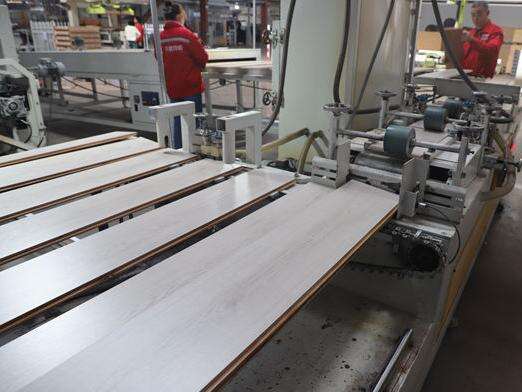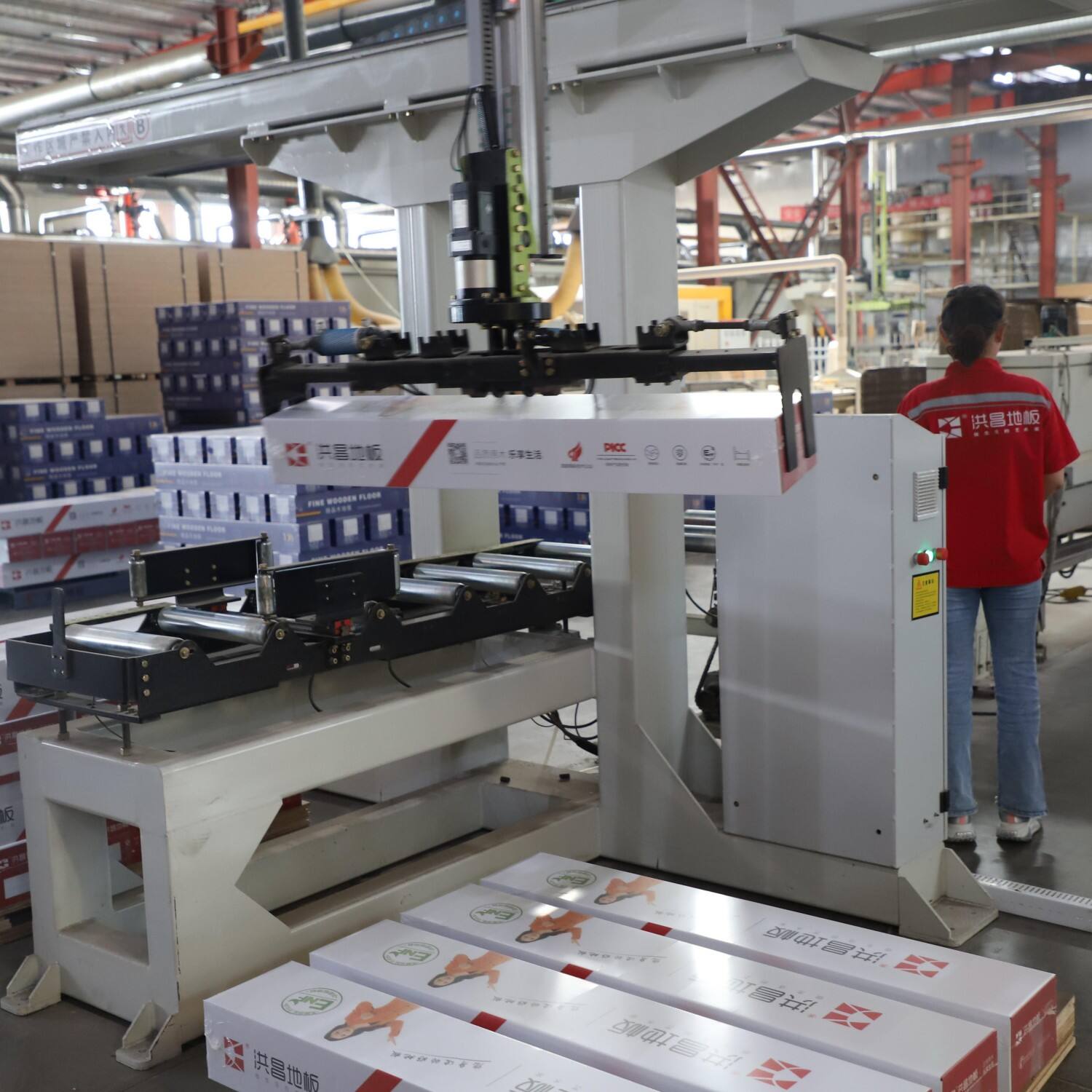Understanding the Superior Performance of Multi-Layer Flooring Systems
When it comes to large-scale facilities, the choice of flooring goes far beyond mere aesthetics. A three-layer floor represents the pinnacle of modern flooring technology, offering unparalleled durability, performance, and long-term cost efficiency. This sophisticated flooring system has revolutionized how industrial and commercial spaces approach their foundational needs, providing a robust solution that stands up to the most demanding environments.
Modern facility managers and building owners increasingly recognize that the traditional single-layer approach falls short in meeting the complex demands of high-traffic areas. The three-layer floor system addresses these challenges through its innovative design, incorporating distinct layers that work in harmony to deliver superior results.

The Fundamental Architecture of Three-Layer Flooring
Base Layer: The Foundation of Stability
The bottom layer of a three-layer floor serves as the critical foundation, typically consisting of a high-strength concrete substrate or specialized compound. This base layer provides the structural integrity necessary for supporting heavy loads and maintaining dimensional stability over time. Engineers carefully design this foundation to ensure proper load distribution and prevent potential issues like cracking or settling.
The base layer also incorporates essential features like moisture barriers and thermal insulation properties, protecting the entire floor system from ground-related challenges. This foundational element ensures that the three-layer floor maintains its integrity even under extreme conditions.
Middle Layer: The Performance Enhancement Zone
The intermediate layer acts as the system's powerhouse, incorporating specialized materials designed for specific performance attributes. This layer often contains reinforcing compounds, impact-absorption materials, and custom additives that enhance the floor's overall functionality. The middle section of a three-layer floor plays a crucial role in noise reduction, shock absorption, and thermal regulation.
Advanced polymer technologies within this layer provide exceptional resistance to chemical spills, heavy impact, and temperature fluctuations. This sophisticated engineering ensures that the flooring system can withstand the diverse challenges present in large-scale facilities while maintaining its structural integrity.
Performance Benefits in Industrial Settings
Superior Load-Bearing Capabilities
One of the most significant advantages of a three-layer floor is its exceptional load-bearing capacity. The strategic layering allows for optimal weight distribution, making it ideal for facilities that house heavy machinery or require frequent forklift traffic. Each layer contributes to the overall structural strength, preventing common issues like surface deformation or substrate failure.
The engineered system can support static loads of several thousand pounds per square foot while maintaining its integrity under dynamic loading conditions. This remarkable strength makes three-layer floor systems particularly valuable in manufacturing plants, warehouses, and logistics centers.
Enhanced Durability and Longevity
The durability of three-layer floor systems significantly exceeds that of conventional flooring options. The multi-layer construction creates a synergistic effect where each layer protects and enhances the others, resulting in a floor that maintains its performance characteristics for extended periods. This exceptional durability translates to reduced maintenance requirements and lower lifetime ownership costs.
Facility managers report that properly installed three-layer floor systems often exceed their expected service life by several years, providing an outstanding return on investment. The robust nature of these floors makes them particularly suitable for environments where downtime for repairs or replacement would be costly.
Environmental and Safety Considerations
Sustainable Design Features
Modern three-layer floor systems incorporate eco-friendly materials and construction methods, aligning with current sustainability initiatives. The layered design allows for the use of recycled content in certain components while maintaining performance standards. Additionally, the extended lifespan of these floors reduces the environmental impact associated with frequent replacements.
The system's energy-efficient properties, including improved insulation and thermal management, contribute to reduced heating and cooling costs in large facilities. This environmental consciousness extends to the manufacturing process, where producers increasingly employ sustainable practices and materials.
Advanced Safety Protocols
Safety features are inherent in the design of three-layer floor systems. The top layer can be engineered to provide specific slip-resistance qualities, crucial for worker safety in industrial environments. The middle layer's shock-absorption properties help reduce fatigue for personnel who spend long hours standing or walking on the surface.
Fire-resistant properties can be incorporated into various layers, enhancing the overall safety profile of the facility. The system's ability to maintain its integrity under extreme conditions provides an additional safety margin during emergency situations.
Maintenance and Long-Term Value
Simplified Maintenance Procedures
Despite their sophisticated construction, three-layer floor systems require surprisingly straightforward maintenance routines. The top layer's engineered surface resists staining and chemical damage, making daily cleaning more efficient. The robust nature of the system reduces the frequency of major maintenance interventions, contributing to lower operational costs.
Regular maintenance protocols can be standardized across large areas, simplifying staff training and ensuring consistent results. The durability of three-layer floor systems means that even in high-traffic areas, the surface maintains its appearance and functionality with standard care procedures.
Cost-Benefit Analysis
While the initial investment in a three-layer floor system may be higher than simpler alternatives, the long-term financial benefits are substantial. The extended service life, reduced maintenance requirements, and improved operational efficiency contribute to a compelling return on investment. Facility managers often report significant cost savings over the floor's lifetime when compared to traditional flooring options.
The system's ability to prevent common flooring problems helps avoid costly repairs and business interruptions. This reliability makes three-layer floor systems particularly attractive for facilities where continuous operation is critical to business success.
Frequently Asked Questions
How long does a three-layer floor typically last in industrial settings?
A properly installed and maintained three-layer floor system typically lasts 15-20 years in industrial settings, though many installations exceed this timeframe. The actual lifespan depends on factors such as traffic volume, load types, and maintenance practices.
Can existing facilities be upgraded to a three-layer floor system?
Yes, most facilities can be retrofitted with a three-layer floor system. The process requires careful assessment of the existing substrate and may involve additional preparation work, but the benefits often justify the renovation investment.
What makes three-layer floors more cost-effective than traditional options?
Three-layer floors prove more cost-effective through their extended lifespan, reduced maintenance requirements, improved operational efficiency, and enhanced protection of the substrate. While initial costs are higher, the total cost of ownership over the floor's lifetime is typically lower than with conventional flooring systems.


